by Gary Knox | May 22, 2014
 Nursery IPM Workshop
Nursery IPM Workshop
North Florida
Research and Education Center
May Building Seminar Room and On
-site Outdoor Nursery Facilities
155 Research Road Quincy, Florida 32351
June10-11, 2014
Don’t miss this hands-on, 2-day workshop focused on integrated pest management (IPM) for nursery crops! Learn how to save resources, reduce pest damage and pesticide use, and create a safer working environment for employees, all while earning 13 pesticide CEUs plus FNGLA CEUs! Georgia pesticide CEUs applied for.
You will learn to identify major pests, plant diseases, and weeds using live samples, lectures, and images. Horticulturists, plant pathologists, entomologists, and weed scientists – – from major universities across the southeastern U.S. – – will teach you about some of the latest technologies to prevent pests and use your smart phone as a pest scouting device. Each participant will receive a free copy of IPM Pro, a mobile device app for IPM in ornamental crops, as well as many printed reference materials. In-depth and focused on IPM in ornamentals, this workshop is one of kind and well worth your time!
Registration is only $15 but you must pre-register to participate; no walk-ins allowed! To register and for more information, go to the registration website
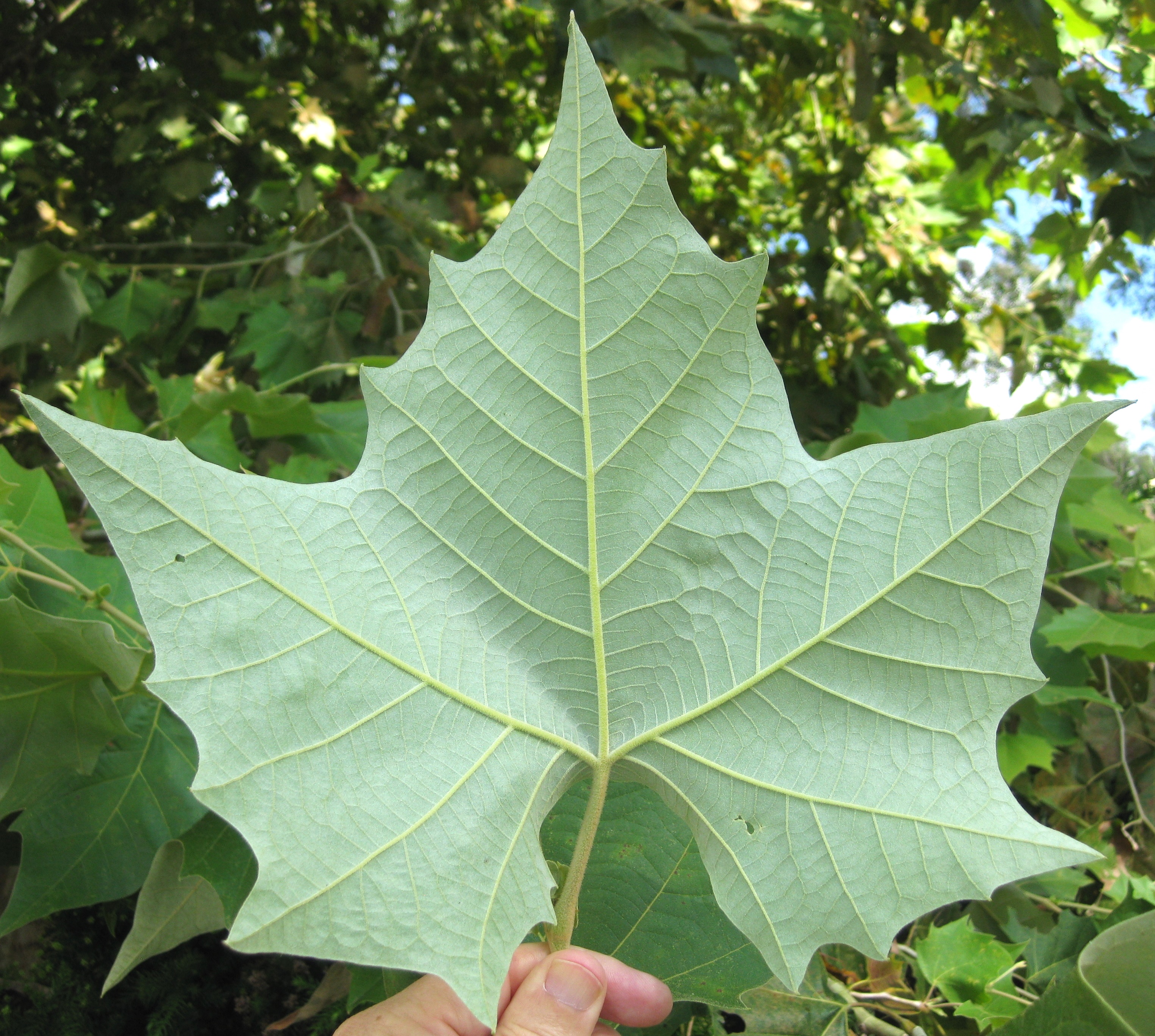
by Gary Knox | May 20, 2014
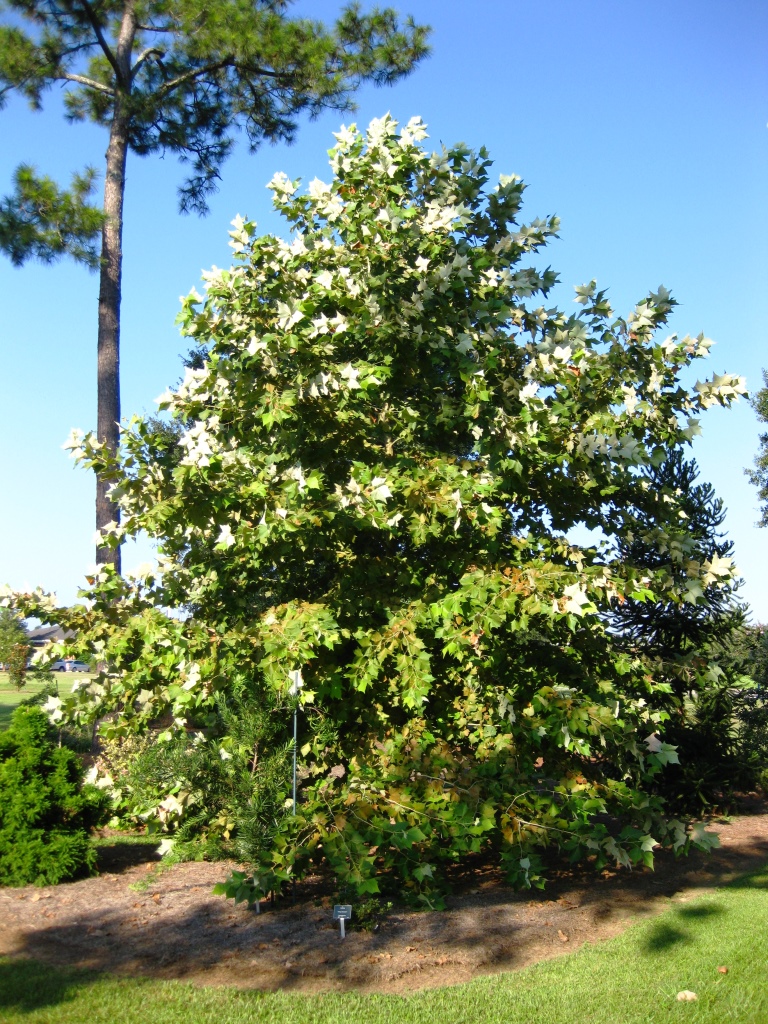
Mexican Sycamore, Platanus mexicana.
Mexican sycamore (Platanus mexicana) is a fast growing, drought tolerant tree boasting smooth white-and-tan bark and large maple-like leaves with velvety, silver undersides. Native to northeastern and central Mexico, this tree’s cold hardiness is not well defined. However, Mexican sycamore grows well as far north as USDA Cold Hardiness Zone 8b in Texas and Florida.
Mexican sycamore is slightly smaller than our native American sycamore (Platanus occidentalis). While known to grow up to 80 feet or more in the wild, Mexican sycamore typically reaches a mature height of 50 feet in the landscape with a width of about 30 feet. The tree is deciduous with an upright rounded crown. Mexican sycamore grows best in full sun and is adapted to most soils, including alkaline soils. While considered drought tolerant, best success occurs when plants are irrigated until established.
The lobed, maple-like leaves are up to 8 inches wide and olive-green, sometimes turning yellow before falling in December. Leaf undersides of mature trees (at least 4 to 6 years old) develop short, dense, whitish hairs resulting in an attractive silvery appearance. The large leaves can be a nuisance if they fall where leaves must be raked. Like the American sycamore, the aggressive roots and relatively large mature size of this tree suggest it not be used near structures and pavement or under power lines.
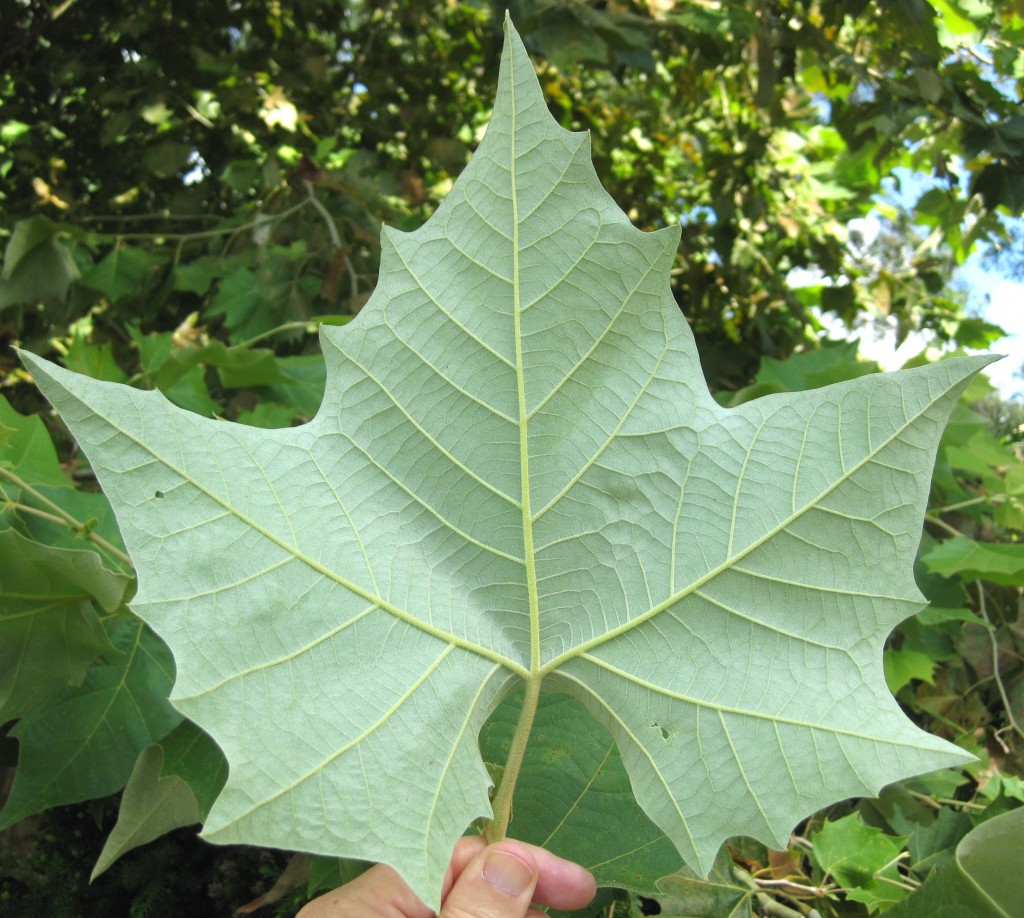
Closeup of the silvery underside of a Mexican Sycamore leaf.
Male and female flowers are borne separately on the same plant from December through February and appear as greenish balls hanging from the branches. Aggregate-like fruit about 1 1/2 inches in diameter follow in April through August.
Mexican sycamore is resistant to bacterial leaf scorch, which can be a problem on American sycamore. This bacterium causes leaves to curl and turn brown and may eventually kill American sycamore. Two occasional fungal diseases affecting Mexican sycamore are anthracnose and powdery mildew. Anthracnose causes moderate to severe leaf drop during cool, wet springs. Initial symptoms are light brown areas forming along the veins of new leaves; if severe, anthracnose can cause cankers as well as leaf drop. Powdery mildew appears as a whitish dust on leaves.
Sycamore lace bugs may feed on leaf undersides in late summer and fall. The feeding results in a stippled appearance on the top of the leaf and black spots of feces on the underside. So far, observations of this tree in Florida suggest infestations of sycamore lace bugs are not as severe as on American sycamore. Aphids may also feed on leaves; they cause little damage to the tree but exude honeydew upon which sooty mold grows and turns leaf surfaces black.
Mexican sycamore is an attractive, smaller statured alternative to American sycamore. Unfortunately, it is not commonly grown by Florida nurseries and may be difficult to find.
Platanus mexicana (Mexican sycamore) has not yet been evaluated using the IFAS Assessment of Non-Native Plants in Florida’s Natural Areas (http://plants.ifas.ufl.edu/assessment/). Without this assessment, the temporary conclusion is that P. mexicana is not a problem species at this time and may be recommended.
by Gary Knox | Mar 18, 2014
Given crapemyrtle’s reputation for plant vigor and pest resistance, I was shocked to see Chinese crapemyrtles noticeably affected by a previously obscure pest.
Last November I had the privilege of traveling to China with Dave Creech (Stephen F. Austin University), Mengmeng Gu (Texas A&M) and Yan Chen (LSU-Hammond). Crapemyrtles, Lagerstroemia spp., are native to Asia, and China is regarded as the first to cultivate crapemyrtle as a flowering tree. As a crapemyrtle enthusiast, I eagerly looked forward to seeing Lagerstroemia collections in Chinese botanical gardens. What we saw in Beijing surprised us.
![Figure 1 Note the black sooty mold coating the layers of white and grey scale, believed to be crapemyrtle bark scale, Eriococcus lagerstroemiae. [Photo by Gary Knox in Beijing, China]](https://nwdistrict.ifas.ufl.edu/hort/files/2014/03/crapemyrtle-scale-768x1024.jpg)
Figure 1 Note the black sooty mold coating the layers of white and grey scale, believed to be crapemyrtle bark scale, Eriococcus lagerstroemiae. [Photo by Gary Knox in Beijing, China]
Symptoms, Appearance and Distribution in China
An early symptom of crapemyrtle bark scale is black sooty mold covering extensive areas of leaves and stems as a result of honeydew exuded by the scale. Individual scale insects are white to gray in color and ooze pink when crushed (Fig. 2). Large populations build up in branch crotches and extend up branches, appearing crusty white to gray. This scale usually is not present on new growth, leaves or slender stems unless infestations are heavy.
![Figure 2. This white to grey colored scale oozes pink when crushed. [Photo by Gary Knox in Beijing, China]](https://nwdistrict.ifas.ufl.edu/hort/files/2014/03/crapemyrtlescale2-505x1024.jpg)
Figure 2. This white to grey colored scale oozes pink when crushed. [Photo by Gary Knox in Beijing, China]
We found this scale on crapemyrtle in all four cities we visited, across hardiness zones roughly equivalent to USDA Cold Hardiness Zones 6b to 9 (Beijing, Zone 6b/7a; Nanjing, Zone 8a/8b; Shanghai, Zone 8b/9a; and Kunming, Zone 9). However, this scale was not found on all crapemyrtle. My personal observation is that stressed plants appeared more susceptible to this scale, as exemplified by infestations on freeze-damaged crapemyrtle in Beijing (Fig. 3) or in a poorly maintained planting in the Nanjing Airport parking lot. Our hosts indicated the problem appeared to be more severe on hybrid cultivars introduced from the U.S., and our observations mostly confirmed that.
In the U.S.?
Unfortunately, crapemyrtle bark scale or a similar scale may already be in the U.S. A new scale insect believed to be a species of Eriococcus was first discovered in the Dallas, Texas, area in 2010 where it is problematic on landscape crapemyrtles. It has not been definitively identified by entomologists yet and management recommendations are still being developed. However, this scale has since been observed in Shreveport, LA, Memphis, TN, and Little Rock, AR, undoubtedly being moved with plants. The expanding distribution of this scale and my personal observations of crapemyrtle bark scale throughout China suggest this scale could have a widespread and severe impact on crapemyrtles in landscapes.
![Figure 3. Dr. Gu is dismayed at seeing this crapemyrtle planting infested by scale (note the black sooty mold on stems). [Photo by Gary Knox in Beijing, China]](https://nwdistrict.ifas.ufl.edu/hort/files/2014/03/crapemyrtlescale3-767x1024.jpg)
Figure 3. Dr. Gu is dismayed at seeing this crapemyrtle planting infested by scale (note the black sooty mold on stems). [Photo by Gary Knox in Beijing, China]
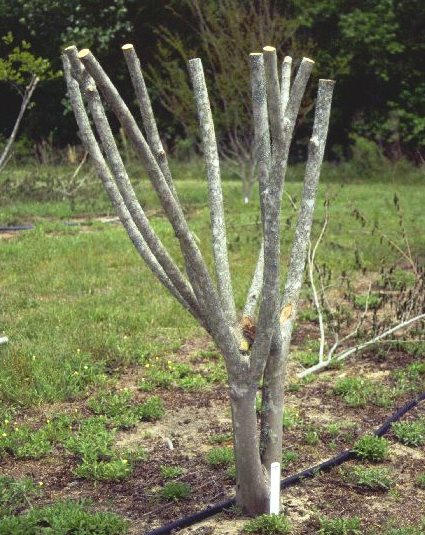
by Gary Knox | Feb 11, 2014
This is the time of year when we often see crapemyrtles unnecessarily topped: main stems that are several years old are cut back, often leaving branch stubs 2 – 5 inches or more in diameter. Topping is sometimes called heading, stubbing, rounding and dehorning.
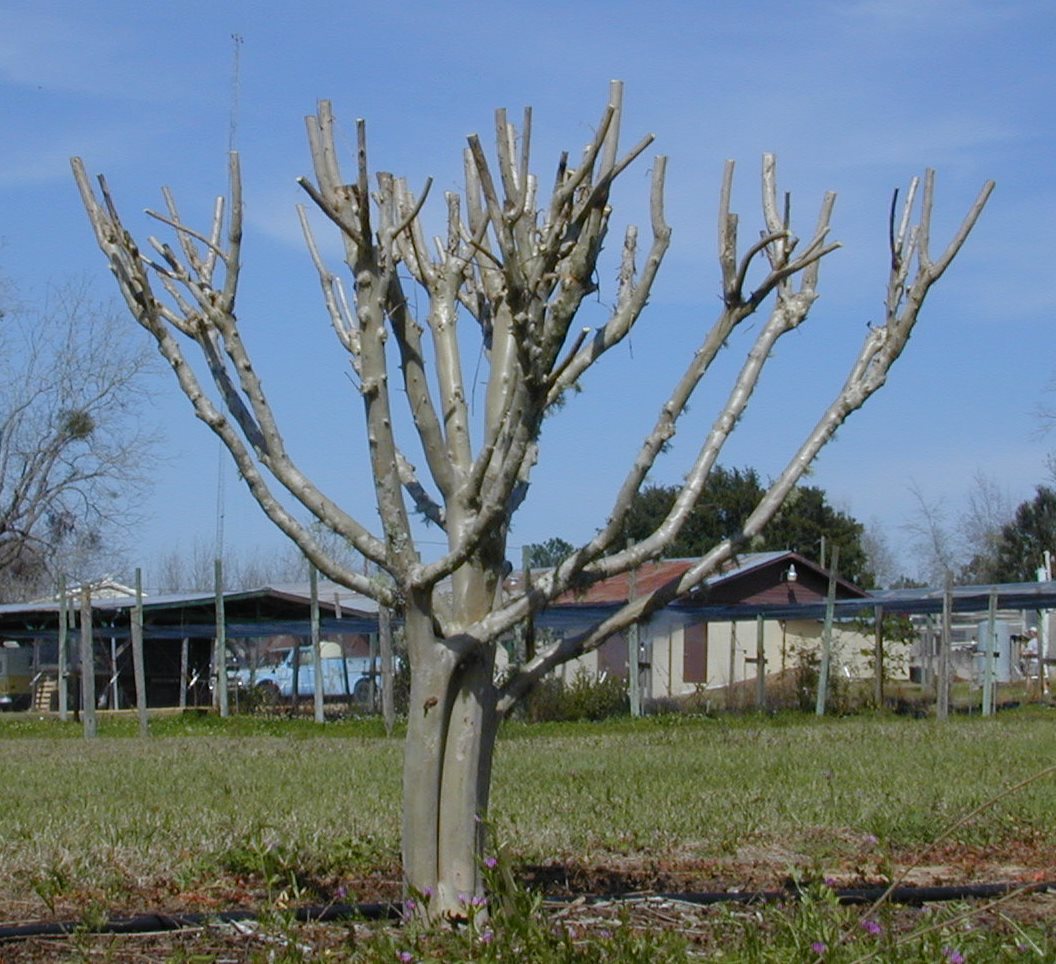
Figure 1. Topping is the drastic removal of large-diameter wood (typically several years old) with the end result of shortening all stems and branches. Topping crapemyrtle is often referred to as “crape murder” because topping usually is not recommended for crapemyrtle. Image Credit Dr. Gary Knox
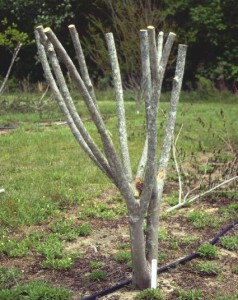
Figure 2. Topping is the drastic removal of large-diameter wood (typically several years old) with the end result of shortening all stems and branches. Topping crapemyrtle is often referred to as “crape murder” because topping usually is not recommended for crapemyrtle. Image Credit Dr. Gary Knox
In the case of crapemyrtles, another name for this practice is “crape murder”. Topping a crapemyrtle is almost always unnecessary. Because people have seen this done in previous years, home owners often mimic this practice in their own yards, not realizing the unfortunate consequences.
Research at the University of Florida, detailed in this linked publication, found that topping crapemyrtle (“crape murder”) delays flowering up to one month. In other words, unpruned trees may begin flowering in June whereas topped trees don’t flower until July. This research also found topping reduced the number of flowers and shortened the flowering season. Finally, topping stimulated more summer sprouting from roots and stems. Sprouting results in greater maintenance since sprouts are usually removed to maintain an attractive plant appearance.
Unfortunately, landscape professionals and home owners often must maintain crapemyrtles that others planted, and so must deal with the consequences of poor cultivar selection and/or placement. If a crapemyrtle requires routine pruning to fit into its surroundings, it should be replaced with a smaller maturing cultivar. Dwarf crapemyrtles mature at a height of 5 feet; medium crapemyrtle cultivars grow up to about 15 feet in height, and tall or tree-size crapemyrtle cultivars exceed 15 feet and often grow to 20 – 30 feet tall in 10 years.
Best locations for crapemyrtle are areas in full sun with plenty of room for the cultivar size and away from walkways and roads. Proper selection of crapemyrtle cultivar and proper placement in the landscape can result in a low maintenance crapemyrtle without the need for significant pruning.
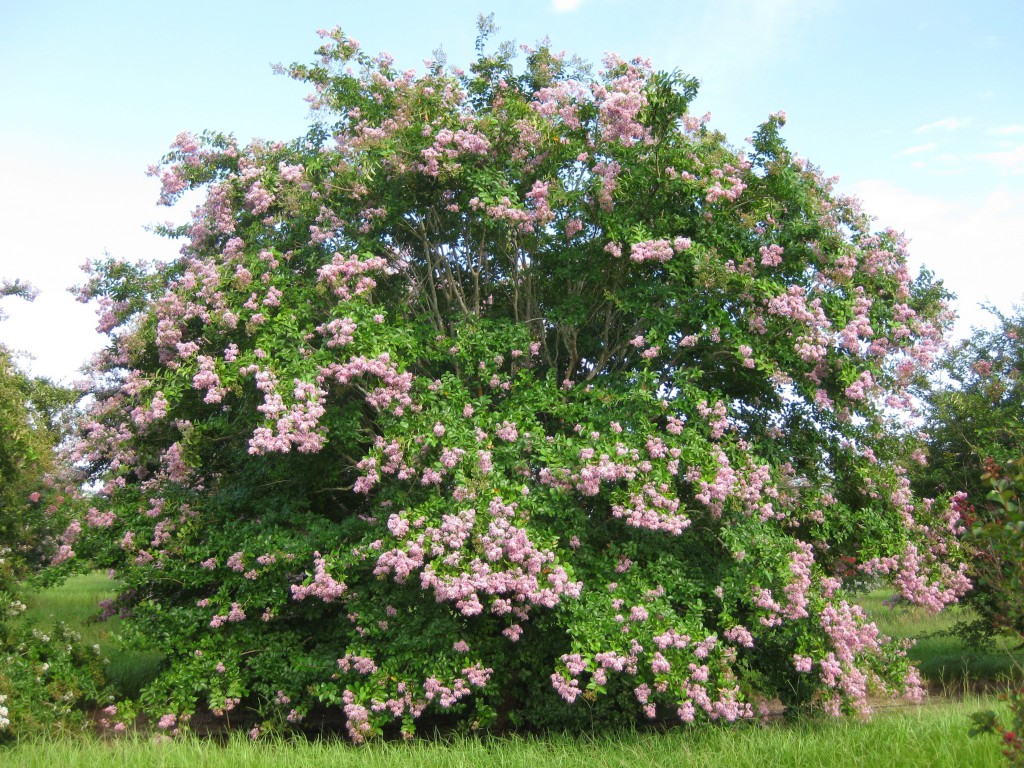
Figure 3. With proper cultivar selection and placement in the landscape, crapemyrtle develops into a beautifully shaped tree that rarely needs pruning. This crapemyrtle is ‘Muskogee’. Image Credit Gary Knox
For more information, see ENH1138, Crapemyrtle Pruning.
by Gary Knox | Jan 7, 2014
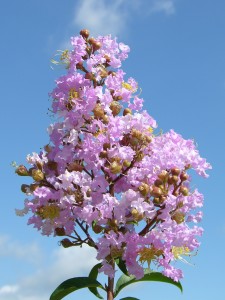
‘Apalachee’ has light lavender flowers. Photo by Gary Knox
‘Apalachee’ crapemyrtle is a statuesque small deciduous tree with lavender flowers, dark green leaves and cinnamon-orange bark. Lagerstroemia indica x fauriei ‘Apalachee’ is one of the hybrids released in 1987 from the breeding program of the U.S. National Arboretum. It grows as an upright to vase-shaped, multi-stemmed tree in USDA Cold Hardiness Zones 7a-9b.
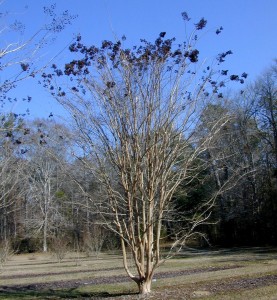
Seed capsules of ‘Apalachee’ add winter interest. Photo by Gary Gnox
Seed capsules add unexpected winter ornament to the leafless branches of the deciduous tree. Because individual flowers are packed tightly in the flower panicle, the seed capsules are correspondingly closely spaced. Persisting seed capsules add interest to the tree’s profile similar to the way dried flowers of oakleaf hydrangea continue to add interest long after the flowers have faded.
Crapemyrtle grows and flowers best in full sun with rich, moist soil but is tolerant of drought and all but wet soils. ‘Apalachee’ has good resistance to powdery mildew, very good resistance to cercospora leaf spot and moderate resistance to flea beetle (Altica sp.). This hybrid is susceptible to crapemyrtle aphid. ‘Apalachee’ performs best with minimal pruning. Crapemyrtle is best located away from pavement and structures that may be stained by fallen flowers.
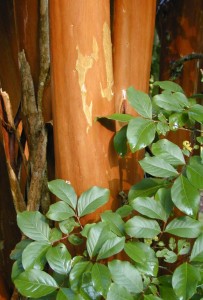
Cinnamon-orange bark of ‘Apalachee’. Photo by Gary Knox
‘Apalachee’ grew to a height of 26 feet and a width of 21 feet in 15 years at former University of Florida facilities in Monticello, Florida. It was one of the most outstanding crapemyrtles in that evaluation planting. This crapemyrtles’ form, vigorous growth, dark green leaves, lavender flowers, cinnamon-orange bark, and persistent seed capsules give it year-round appeal and allow it to stand out among crapemyrtle cultivars.
Lagerstroemia indica x fauriei ‘Apalachee’ has not yet been evaluated using the IFAS Assessment of Non-Native Plants in Florida’s Natural Areas. Without this assessment, the temporary conclusion is that Lagerstroemia indica x fauriei ‘Apalachee’ is not a problem species at this time and may be recommended.
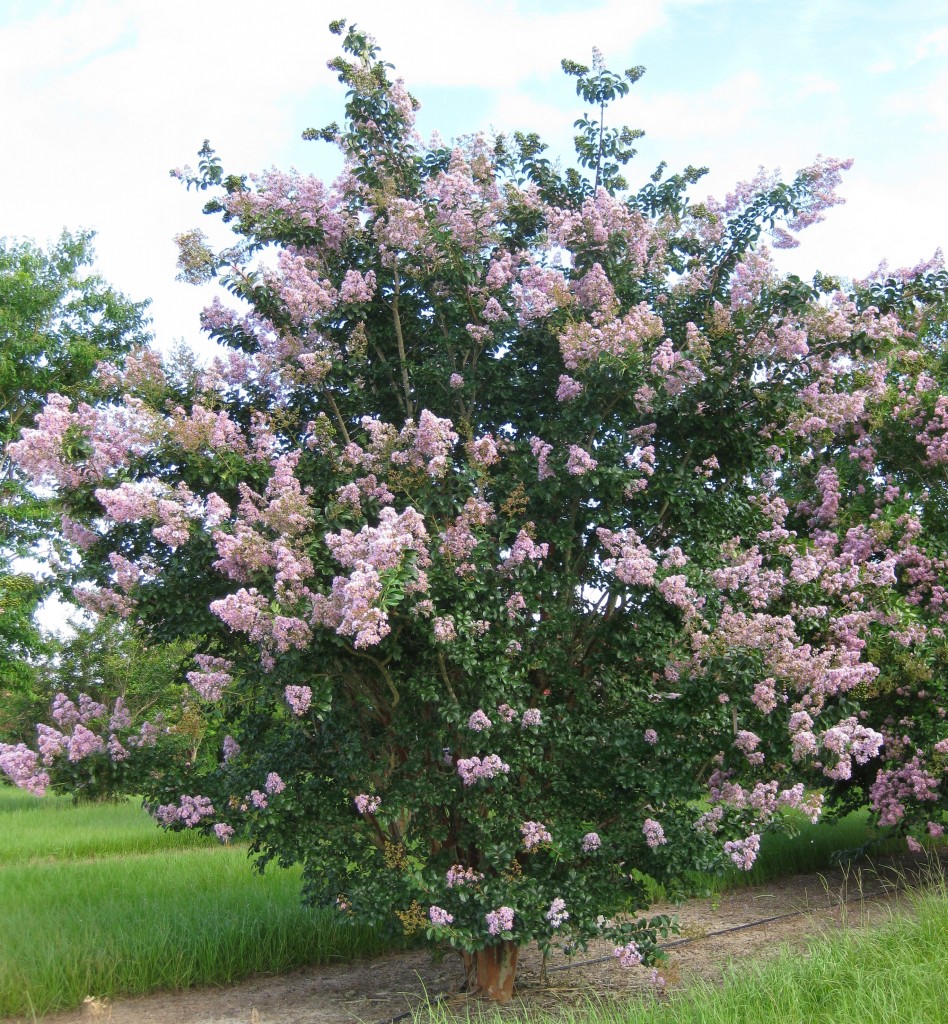
‘Apalachee’ crapemyrtle in full bloom. Photo by Gary Knox
 Nursery IPM Workshop
Nursery IPM Workshop



![Figure 1 Note the black sooty mold coating the layers of white and grey scale, believed to be crapemyrtle bark scale, Eriococcus lagerstroemiae. [Photo by Gary Knox in Beijing, China]](https://nwdistrict.ifas.ufl.edu/hort/files/2014/03/crapemyrtle-scale-768x1024.jpg)
![Figure 2. This white to grey colored scale oozes pink when crushed. [Photo by Gary Knox in Beijing, China]](https://nwdistrict.ifas.ufl.edu/hort/files/2014/03/crapemyrtlescale2-505x1024.jpg)
![Figure 3. Dr. Gu is dismayed at seeing this crapemyrtle planting infested by scale (note the black sooty mold on stems). [Photo by Gary Knox in Beijing, China]](https://nwdistrict.ifas.ufl.edu/hort/files/2014/03/crapemyrtlescale3-767x1024.jpg)







